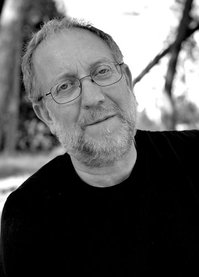Dr. Zelenko was stricken with a rare form of lung cancer in 2018, shortly before the Covid-19 pandemic. I wonder if that increased his personal sense of urgency to find a cure for Covid-19?
(p. A21) Vladimir Zelenko, a self-described “simple country doctor” from upstate New York who rocketed to prominence in the early days of the Covid-19 pandemic when his controversial treatment for the coronavirus gained White House support, died on Thursday in Dallas. He was 48.
. . .
Like many health care providers, he scrambled when the coronavirus began to appear in his community. Within weeks he had landed on what he insisted was an effective cure: a three-drug cocktail of the antimalarial drug hydroxychloroquine, the antibiotic azithromycin and zinc sulfate.
. . .
“At the time, it was a brand-new finding, and I viewed it like a commander in the battlefield,” Dr. Zelenko told The New York Times. “I realized I needed to speak to the five-star general.”
On March 28, [2020] the Food and Drug Administration granted emergency authorization to doctors to prescribe hydroxychloroquine and another antimalarial drug, chloroquine, to treat Covid. Mr. Trump called the treatment “very effective” and possibly “the biggest game changer in the history of medicine.”
But, as fellow medical professionals began to point out, Dr. Zelenko had only his own anecdotal evidence to support his case, and what little research had been done painted a mixed picture.
Still, he became something of a folk hero on the right, someone who offered not just hope amid the pandemic but also an alternative to the medical establishment and Dr. Anthony Fauci, the director of the National Institute of Allergy and Infectious Diseases, who insisted that months of research would be needed to find an effective treatment.
. . .
A quiet, unassuming man, Dr. Zelenko seemed unprepared for the attention he received, which included harassing phone calls and even death threats. In May 2020, a federal prosecutor opened an investigation into whether he had falsely claimed F.D.A. approval for his research.
. . .
After the F.D.A. rescinded its approval of hydroxychloroquine as a Covid treatment, he founded a company, Zelenko Labs, to promote other nonconventional treatments for the disease, including vitamins and quercetin, an anti-inflammatory drug.
And while he claimed to be apolitical, he embraced the image of a victim of the establishment. He founded a nonprofit, the Zelenko Freedom Foundation, to press his case. In December 2020, Twitter suspended his account, stating that it had violated standards prohibiting “platform manipulation and spam.”
. . .
In a memoir, “Metamorphosis” (2018), Dr. Zelenko wrote that he grew up nonreligious and entered Hofstra University as an avowed atheist.
“I enjoyed debating with people and proving to them that G-d did not exist,” he wrote. “I studied philosophy and was drawn to nihilistic thinkers such as Sartre and Nietzsche.”
But after a trip to Israel, he began to change his mind. He gravitated toward Orthodox Judaism, and in particular the Chabad-Lubavitch movement.
He graduated from Hofstra in 1995 with a degree in chemistry, and he received his medical degree from the State University of New York at Buffalo in 2000.
. . .
In 2018, doctors found a rare form of cancer in his chest and, in hopes of treating it, removed his right lung.
For the full obituary see:
Clay Risen. “Vladimir Zelenko, 48, ‘Country Doctor’ Who Pushed Unfounded Covid Remedy.” The New York Times (Saturday, July 2, 2022): A21.
(Note: ellipses, and bracketed year, added.)
(Note: the online version of the obituary has the date July 1, 2022 and has the title “Vladimir Zelenko, 48, Dies; Promoted an Unfounded Covid Treatment.”)
Dr. Zelenko’s pre-Covid-19 memoir is:
Zelenko, Vladmir. Metamorphosis. Lakewood, NJ: Israel Bookshop Publications, 2019.
A highly credentialed Yale academic presented evidence of the promise of hydroxychloroquine for early outpatient treatment in:
Risch, Harvey A. “Early Outpatient Treatment of Symptomatic, High-Risk Covid-19 Patients That Should Be Ramped-up Immediately as Key to the Pandemic Crisis.” American Journal of Epidemiology 189, no. 11 (Nov. 2020): 1218–26.



